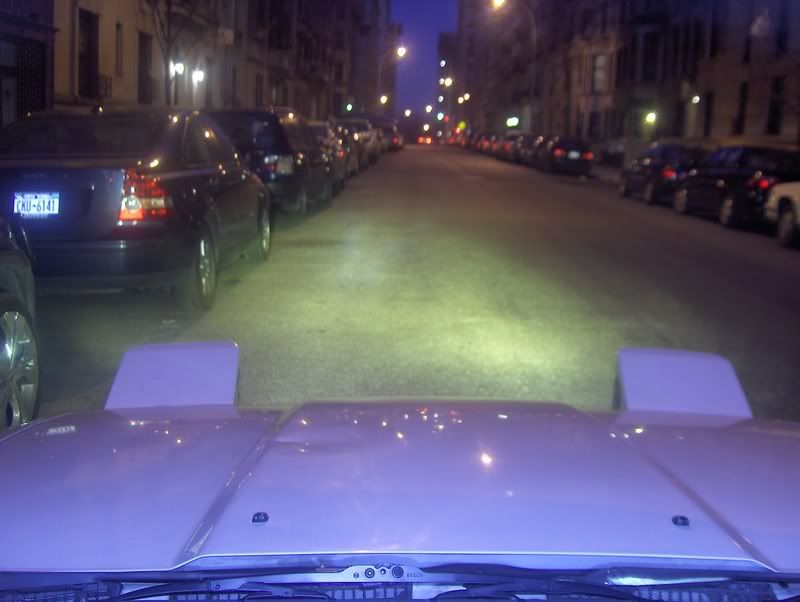Yellow Headlights
- Thread starter theKnifeArtist
- Start date
You are using an out of date browser. It may not display this or other websites correctly.
You should upgrade or use an alternative browser.
You should upgrade or use an alternative browser.
as far as illegal, its not illegal till you get cought. i havent been bother by the fuzz yet had it for a couple of months. i will see if i can get a pic tom. only thing is one of the projection lamps broke so i am using some crappy hand me down diamond cut lens (it suxs). been to lazy and cheap to buy new headlamps.
Illegal none the lessgp-7mgte said:as far as illegal, its not illegal till you get cought.
Not talking shit but they probably think they're normal. How Yellow are they by the way??havent been bother by the fuzz yet had it for a couple of months. .
Here is a comparison picture yellow/ blue. enjoi.
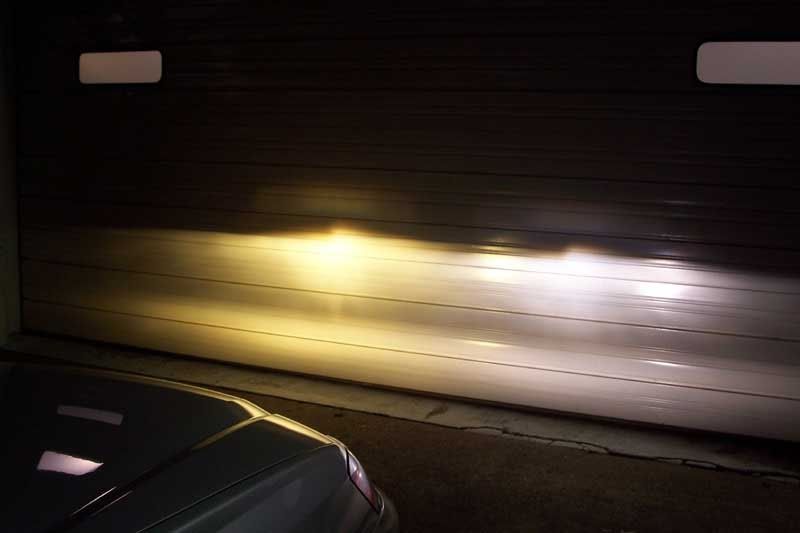
I'm probably wasting my time here but there's a lot of science involved in automotive lighting. Not only lighting science but how human beings see science. Rather than bore you with the details as it applies to fog lighting I suggest you research something called selective yellow.
donnys90T said:I'm probably wasting my time here but there's a lot of science involved in automotive lighting. Not only lighting science but how human beings see science. Rather than bore you with the details as it applies to fog lighting I suggest you research something called selective yellow.
bore us please...
nobody hates a good tech post, lets hear it.
BAM bitch....GotTurbos? said:... nobody hates a good tech post, lets hear it.
What is Selective-Yellow Light?
It's what happens when you subtract blue from the output of a lamp producing white (all colors) light. In 1936, the French for tactical reasons wanted a way to identify the registration nationality of vehicles at night. However, they did not want to reduce roadway safety, and wanted in fact to improve it if possible. So, they figured to remove the blue from the output spectrum of their vehicles' front lamps. White light with the blue component subtracted is known as "selective yellow" light. It is a pure yellow color with little or no orange component--hence the French yellow headlamps. Yellow lamps were subjectively ranked as better in poor weather and lower in glare than white ones, and this matches my own experimental experience with fog lamps that produce yellow light. But is the effect real or just an illusion?
One problem with this conclusion as drawn from the French experience with selective-yellow headlamps in France is that when the question was being considered, the lamps that were being compared with white lamps reduced the absolute intensity of the beam by about 12 percent. This fact may have had a part in reducing the glare. Because the requirement for yellow light no longer exists (though such light is optional in many countries) we probably will never know the vagaries of the answer to this question.
So, what explains the persistent subjective preference amongst experienced poor-weather drivers for yellow fog lamps, despite decades of white fog lamp prevalence? Selective-yellow light can improve a driver's ability to see in fog or rain or snow, but not because it 'penetrates fog better' or 'reflects less off droplets' as is commonly thought. That effect is known as Rayleigh Scattering, and is why the sky appears blue. However, it occurs only when the droplet size is equal or smaller than the wavelength of the light, which is certainly not the case with ordinary fog, rain or snow. Roadway Fog droplets are several orders of magnitude larger than visible light wavelengths—no Rayleigh Scattering.
So, why do yellow fog lamps work better? It's because of the way the human eye interacts with different colors of light. Blue and violet are very difficult for the human optical system to process correctly. They are the shortest visible wavelengths and tend to focus in front of our eyes' retinae, rather than upon it. To demonstrate this to yourself, find a dark blue store front sign or something else that's a dark, pure blue against a dark background in the absence of white light. From any appreciable distance, it's almost impossible for your eyes to see the blue lighted object as a sharply defined form...the edges blur significantly.) Blue also is a very difficult color of light to look at if it is at all intense...it stimulates the reaction we call "glare". So, culling the blue out of the spectrum lightens the optical workload and reduces glare. For more in-depth discussion of the matter, see Bullough & Rea's excellent study on the topic.
So,What's the best method of getting selective-yellow light? Until the mid 1990s, headlamps in France were required to produce yellow light. This was accomplished in one of several ways: With a headlamp lens made out of yellow glass, with a yellow glass balloon in front of the bulb either as part of the bulb or as part of the lamp unit, or, more recently, with a yellow-pass dichroic filter coating on a lamp's lens, reflector, condensor or on halogen bulbs themselves.
The blue-appearing lenses in many Asian-made fog lamps ("ion crystal", "gold irridium", and other nonsensical marketing names) are coated with a multilayer dichroic interference coating which passes selective-yellow light "on axis", which means "straight ahead". Unfortunately, these coatings tend to glow blue when viewed off-axis, which has caused problems with people getting pulled over for illegal "blue" lights 'cause the cop sees blue as he drives by and pulls a quick U-turn.
Many lamps involving dichroic filter coatings on the reflector or lens tend to create "blue haze" above the beam cutoff or, in the case of a driving or SAE headlamp beam, scattered throughout the beam. That's because of the irridescence of these coatings, which causes or aggravates secondary-reflection problems where none would exist absent the coating. With the mirrorlike dichroic coating reflecting images of the glowing filament, light gets where it doesn't belong. Cadmium glass was used to make the old French-market Selective Yellow bulbs; now that Cadmium's been more or less banned from auto parts for environmental reasons, the best remaining options are dichroic bulbs or non-dichroic filters applied to one of the optical elements (lens or reflector).
Dichroic selective-yellow bulbs are available in some of the common fog lamp bulb formats (H1, H3, 9006...). That is certainly the easiest method of getting selective yellow light from a lamp with colorless optics. For those willing to go to the time and effort, applying a coating to an optical element is a more permanent, somewhat better option that relieves the vehicle owner of the need to find and get special bulbs. The best coating for field conversion of lamps from white to selective yellow is POR-15's Colorchrome, in the "Morning Sun" color. Results of conversion can be seen here.
Of course, when we talk about light color in an automotive context, we need to address the question of legality. Under US Federal Motor Vehicle Safety Standard number 108 and Canadian Motor Vehicle Standards 108 and 108.1, headlamps as originally installed on motor vehicles (and as installed by anyone other than the vehicle owner) must produce white light.
Let's stop there for a moment. What is "White"? FMVSS108 contains a reference to an SAE standard that defines "white" light in terms of wavelengths. But it's not just one set color. The standard includes a wavelength aggregate RANGE that is considered "white". That's why arc-discharge headlamps, with their decidedly bluish cast, still are considered "white". It's why "blue ion" or "crystal blue" bulbs with blue-pass dichroic filters sold to poseurs who want to try to pretend they have arc-discharge lamps are NOT considered "white". But more relevant to this discussion, the light can tend towards a yellow tint to a certain degree and still qualify as acceptable "white" light. Osram, Narva, Philips and other established European bulbmakers have been offering partial-tint selective-yellow bulbs for some time now.
--------------------------------------------------------------------------------
Daniel Stern Lighting (Daniel J. Stern, Proprietor)
Yeah, that'll do nicely. I met Dan Stern several years ago. He's likely the most knowledgeable authority in North America on automotive lighting. You can take what he says as gospel. Has even testified in front of Congress on the subject. I buy all my lighting stuff from him. His e-code lenses that fit the Supra are outstanding.
jdub said:Great post TrqMnstr...I learned something today
As did I. EXCELLENT post.
Bump for all you knuckleheads messing with your lighting. Do it right folks.
QWIKSTRIKE said:Talking about rice....You will look cool, but you can't see for shit...What's that going to do when you have an accident, because you couldn't see whats in the road!:aigo: :nono: Why do you think they aren't legal.
I know they are but I dont give a shit. Also they are legal here in Japan, well the green ones are anyways. What I really want to do is just get some nice bright PIAA's or Raybrig's and call it a day. I know of a place that I can get bulbs, albiet crappy ones for about 1400 YEN. ( about 10 US. ). I just wanna see what they look like. Plus here in Japan you have to have your headlights aimed a certain way, mainly down towards the ground. Bottom line, I hate the fake HID H4's I have now!!
Hey no problem, glad I could put up some usefull info, finally.::w00t::jdub said:Great post TrqMnstr...I learned something today
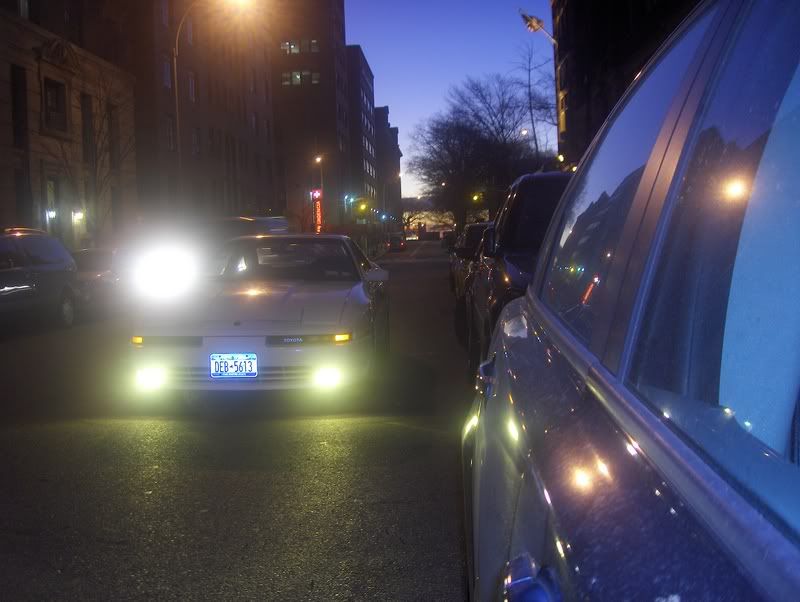
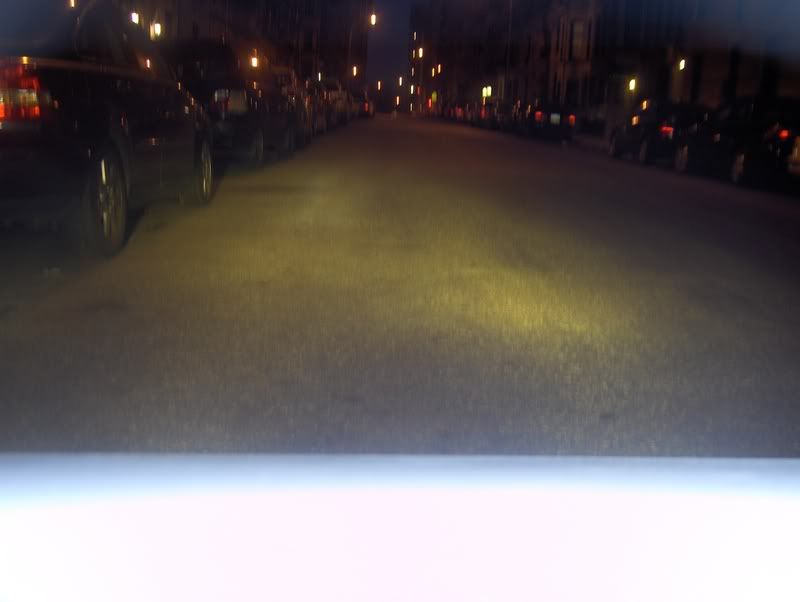
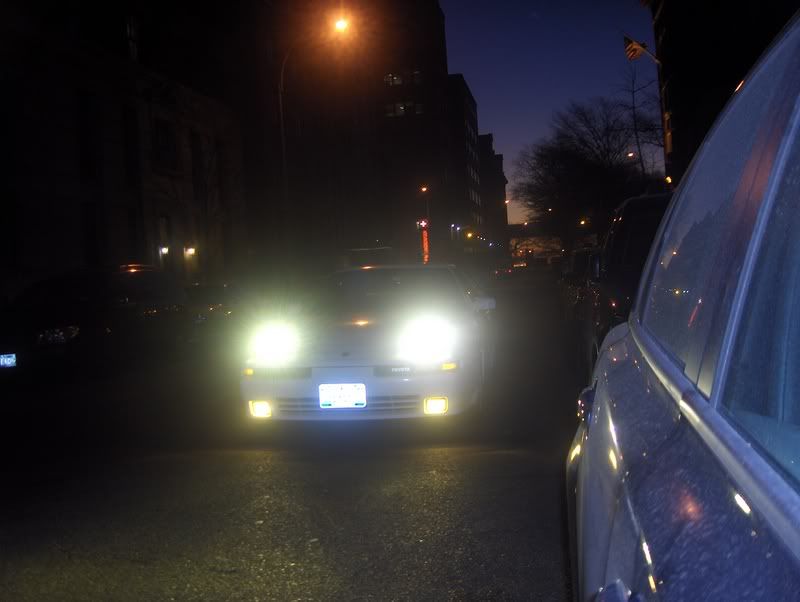
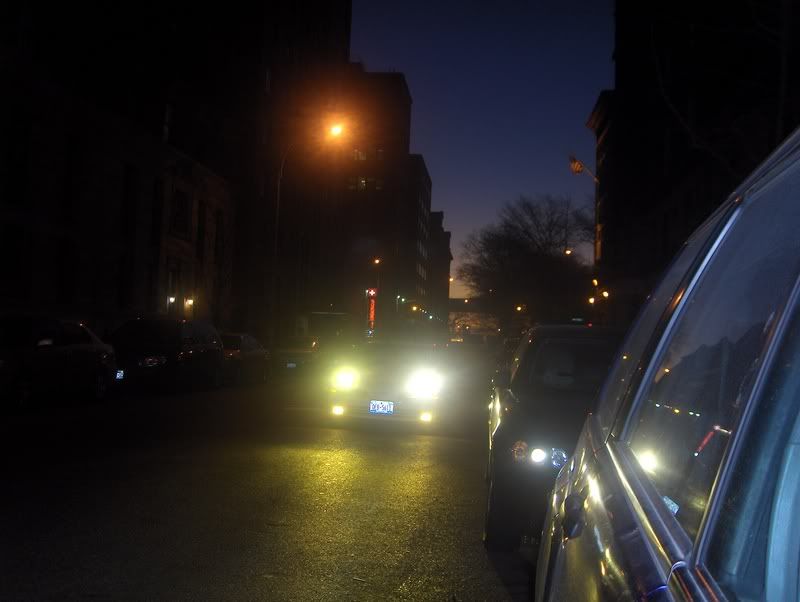
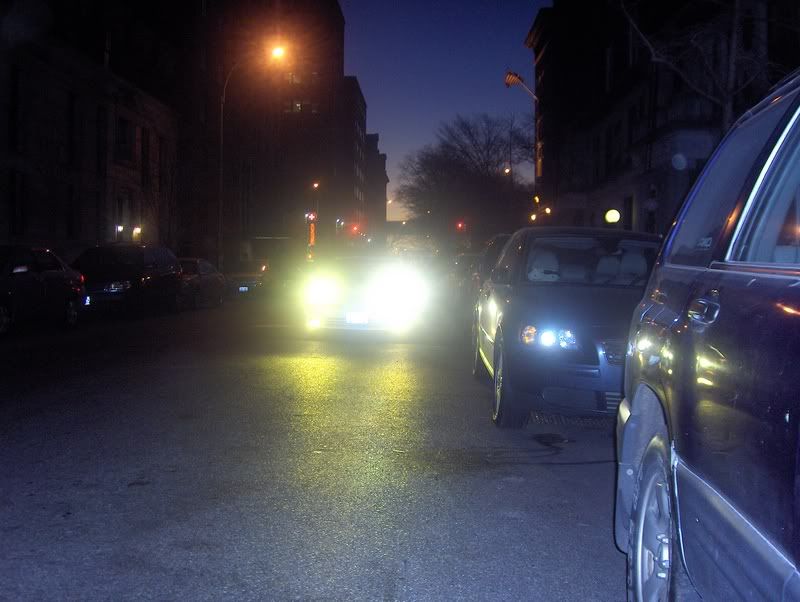
pass. side light is non projection, while the drive side is a projection lens. D.S. light is alot more whit while the P.S. is mero yellow like the foglights. they are 3000k HIDS. fogs are just yellow fog light bulbs.
I learned that in physics class, junior high.Supracentral said:As did I. EXCELLENT post.
Bump for all you knuckleheads messing with your lighting. Do it right folks.
Good copy and paste anyhow... that daniel stern guy is a wacko though.
thank you but i wanna fix the P.S. light. but i am on a low buget right now soo probably in a few weeks. i shouldnt be driving it that much anyhow winter is here.TrqMnstr said:Damn that looks real good.:thumbup:
I like yellow fogs, and I thought I read somewhere that the yellow light actualy like cuts through the fog better or something, I know it helps alot when driving in the snow here,
I think yellow headlights are kinda dumb.
here is a pic of my rx7 with yellow fogs, and my 240 with yellow fogs.


I think yellow headlights are kinda dumb.
here is a pic of my rx7 with yellow fogs, and my 240 with yellow fogs.



